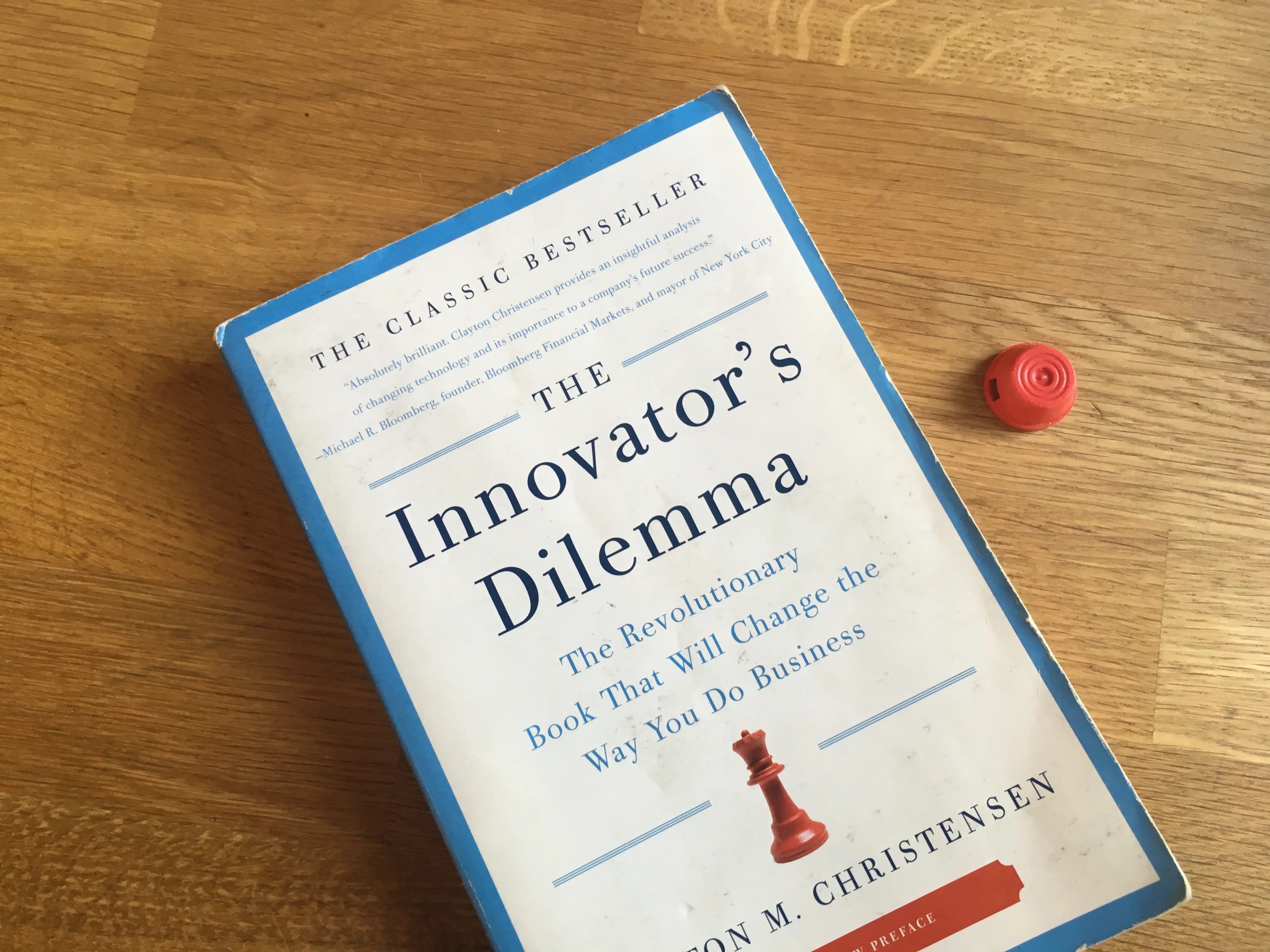
The Innovator's Dilemma: How Can You Loose When You Seem to Be Winning?

I read The Innovator’s Dilemma from Clayton M. Christensen.
This book was published in 1997, but it’s still a must-read for anyone interested in innovation. It coined the term “disruptive technology”, no less!
Clayton shows with a very scientific approach that big companies, owning their market, and doing everything the right way, still fail to foresee new technologies emerge. With the same approach, he gives insights on how the few that survived did and comes up with a practical framework so that your business can survive as well.
Why Do Great Companies Fail?
To understand why great companies can fail, Clayton takes the hard drive industry as an example. The pace at which its technology changed, and the data available on its sales make it the perfect case to study, except it makes the book quite hard to read.

In the 70s, major hard drive companies were building hard drives for mainframes. Those companies focused on getting bigger storage space and faster transfer rates because that’s what their customers asked for. Meanwhile, smaller companies were building hard drives with less capacity storage, and slower transfer rates, about half the size. Those were for the minicomputer market.
The minicomputer market represented only a small part of the hard drive market and wasn’t interesting for major hard drive manufacturers until minicomputers made a breakthrough, and mainframe declined. Underdogs became the leading companies. And it happened with every disk size that ever existed, from the mainframe to the laptops, including desktop PC. More details can be found on The Rigid Disk Drive Industry: A History of Commercial and Technological Turbulence, p.29
This example illustrates that foreseeing disruptive technologies is impossible. Executives of those major companies invested in their established mainstream business because that’s what worked for them at that time and they couldn’t see any interest investing in simpler technology. Their cost structure, skills, marketing, customer relationship, and whole value network was made for sustaining innovation, not disruptive innovation.
It shows that going for disruptive innovation is very counterintuitive for this kind of company, and requires a very special mindset.
How Not to Fail?
From this case study, Clayton proposes a framework of the Four Principles of Disruptive Technology. As its name does not suggest, this framework lists practices that are effective in sustaining technology but anti-productive for disruptive ones.
He advises executives not to try to fight those principles and instead:
- Handle disruptive technologies in a separate organization.
- Make the separate organization self-sufficient.
- Expect experiments to fail, invest few, aim for learning.
- Don’t count on breakthroughs, do with what exists.
I like to think of those principles as: instead of letting competitors put you down, be your own competitor, be the disruptee and the disruptor at the same time. The value network for disruptive technologies is so different from mainstream business that everything should be built anew, with whole different objectives.
Conclusion
To my knowledge, this is the first time a scientific approach has been taken to understand innovation. Reading this book felt like diving in the past and getting to know what inspired Eric Ries, Ash Maurya, or Alexander Osterwalder to write about the Lean Startup.
I’m not going to lie, I had a VERY hard time reading The Innovator’s Dilemma. I’m not used to reading books with so many data-driven proofs and I really struggled to finish it.
That said, it was really worth the effort. It could have been more digestible, maybe it didn’t need as many proofs or as much data. Though, if I had read it in 1997, and knew nothing about innovation, I would probably have needed all that, but I was 9 back then, and I was more into “Where’s Waldo?” than into business books.
If you want to understand what true disruptive innovation is and go further than the buzzword: read it.
Authors

Facilitator at marmelab, Florian also gives lectures to IT students. He's a biker, plays the guitar, and brews his own beer.